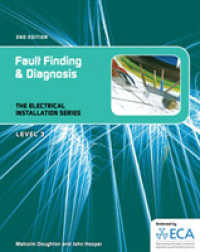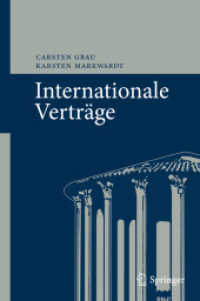- ホーム
- > 洋書
- > 英文書
- > Computer / General
Full Description
Since 1994 the European Commission has been supporting activities under the Environment and Climate programme of research and technological de velopment, with the aim of developing cost-effective applications of satellite Earth observation (EO) for both environmental monitoring and research.








